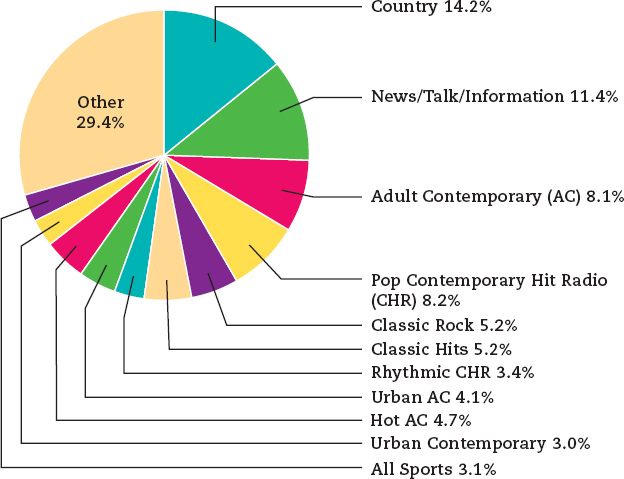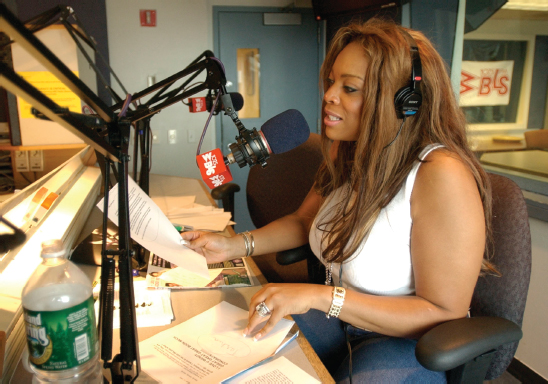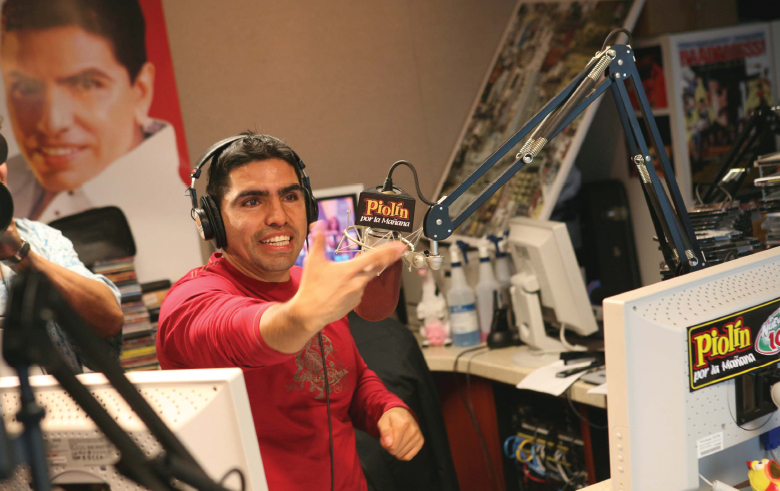Format Specialization
Stations today use a variety of formats based on managed program logs and day parts. All told, more than forty different radio formats, plus variations, serve diverse groups of listeners (see Figure 5.4). To please advertisers, who want to know exactly who is listening, formats usually target audiences according to their age, income, gender, or race/ethnicity. Radio’s specialization enables advertisers to reach smaller target audiences at costs that are much lower than those for television.
Targeting listeners has become extremely competitive, however, because forty or fifty stations may be available in a large radio market. About 10 percent of all stations across the country switch formats each year in an effort to find a formula that generates more advertising money. Some stations, particularly those in large cities, even rent blocks of time to various local ethnic or civic groups; this enables the groups to dictate their own formats and sell ads.

THE MOST POPULAR RADIO FORMATS IN THE UNITED STATES AMONG PERSONS AGE TWELVE AND OLDERSource: Arbitron, Radio Today, 2013 Edition.Note: Based on listener shares for primary AM and FM stations, plus HD stations and Internet streams of radio stations.
News, Talk, and Information Radio
The nation’s fastest-growing format throughout much of the 1990s was the news/talk/information format (see “Case Study: Host: The Origins of Talk Radio”). In 1987, only 170 radio stations operated formats dominated by either news programs or talk shows, which tend to appeal to adults over age thirty-five (except for sports talk programs, which draw mostly male sports fans of all ages). By 2013, more than 1,950 stations carried the format—the most stations of any format. It is the most dominant format on AM radio and the second most popular format (by number of listeners) in the nation (see Figure 5.4 and Table 5.2). A news/talk/information format, though more expensive to produce than a music format, appeals to advertisers looking to target working- and middle-class adult consumers. Nevertheless, most radio stations continue to be driven by a variety of less expensive music formats.
TABLE 5.2
TALK RADIO WEEKLY AUDIENCE (IN MILLIONS)
“We have a huge responsibility to keep the airwaves open for what I think is the majority—representing the voices that are locked out of the mainstream media.”
AMY GOODMAN,CO-HOST OF RADIO’S DEMOCRACY NOW! 2001
| Talk Show Host | 2003 | 2008 | 2013 |
| Rush Limbaugh (Conservative) | 14.5 | 14.25 | 14 |
| Sean Hannity (Conservative) | 11.75 | 13.25 | 13.25 |
| Dave Ramsey (Financial Advice) | * | 4.5 | 7.75 |
| Glenn Beck (Conservative) | * | 6.75 | 7.5 |
| Mark Levin (Conservative) | N/A | 5.5 | 7.5 |
| Jerry Doyle (Conservative) | * | 3.0 | 7.5 |
| Michael Savage (Conservative) | 7 | 8.25 | 3.5 |
| Jim Bohannon (Moderate) | 4 | 3.5 | 3.5 |
Source: Talkers magazine, “The Top Talk Radio Audiences,” July, 2013.
Note: * = Information unavailable; N/A = Talk host not nationally broadcast.
Music Formats

The adult contemporary (AC) format, also known as middle-of-the-road or MOR, is among radio’s oldest and most popular formats, reaching about 8.1 percent of all listeners, most of them over age forty, with an eclectic mix of news, talk, oldies, and soft rock music—what Broadcasting magazine describes as “not too soft, not too loud, not too fast, not too slow, not too hard, not too lush, not too old, not too new.” Variations on the AC format include urban AC, hot AC, rhythmic AC, modern AC, and smooth AC. Now encompassing everything from rap to pop punk songs, Top 40 radio—also called contemporary hit radio (CHR)—still appeals to many teens and young adults. A renewed focus on producing pop singles in the sound recording industry has boosted listenership of this format lately.
Country is the most popular format in the nation (except during morning drive time, when news/talk/information is number one). Many stations are in tiny markets where country is traditionally the default format for communities with only one radio station. Country music has old roots in radio, starting in 1925 with the influential Grand Ole Opry program on WSM in Nashville. Although Top 40 drove country music out of many radio markets in the 1950s, the growth of FM in the 1960s brought it back, as station managers looked for market niches not served by rock music.
Many formats appeal to particular ethnic or racial groups. In 1947, WDIA in Memphis was the first station to program exclusively for black listeners. Now called urban contemporary, this format targets a wide variety of African American listeners, primarily in large cities. Urban contemporary, which typically plays popular dance, rap, R&B, and hip-hop music (featuring performers like Rihanna and Ludacris), also subdivides by age, featuring an Urban AC category with performers like Maxwell, Alicia Keys, and Robin Thicke.

Spanish-language radio, one of radio’s fastest-growing formats, is concentrated mostly in large Hispanic markets such as Miami, New York, Chicago, Las Vegas, California, Arizona, New Mexico, and Texas (where KCOR, the first all-Spanish-language station, originated in San Antonio in 1947). Besides talk shows and news segments in Spanish, this format features a variety of Spanish, Caribbean, and Latin American musical styles, including calypso, flamenco, mariachi, merengue, reggae, samba, salsa, and Tejano.
In addition, today there are other formats that are spin-offs from AOR. Classic rock serves up rock favorites from the mid-1960s through the 1980s to the baby-boom generation and other listeners who have outgrown Top 40. The oldies format originally served adults who grew up on 1950s and early 1960s rock and roll. As that audience has aged, oldies formats now target younger audiences with the classic hits format featuring songs from the 1970s, 1980s, and 1990s. The alternative music format recaptures some of the experimental approach of the FM stations of the 1960s, although with much more controlled playlists, and has helped to introduce artists such as the Dead Weather and Cage the Elephant.
Research indicates that most people identify closely with the music they listened to as adolescents and young adults. This tendency partially explains why classic hits and classic rock stations combined have surpassed CHR stations today. It also helps to explain the recent nostalgia for music from the 1980s and 1990s.